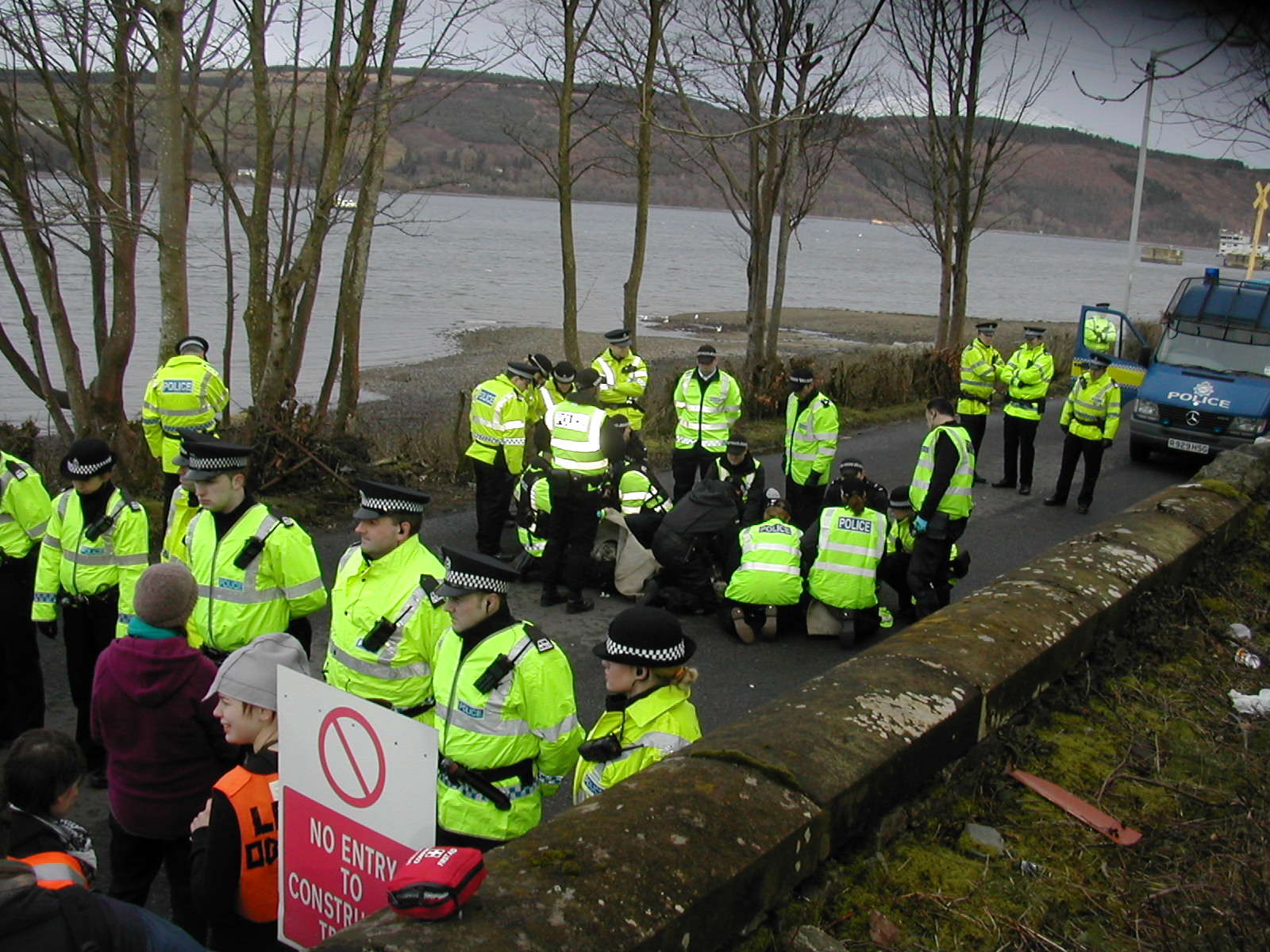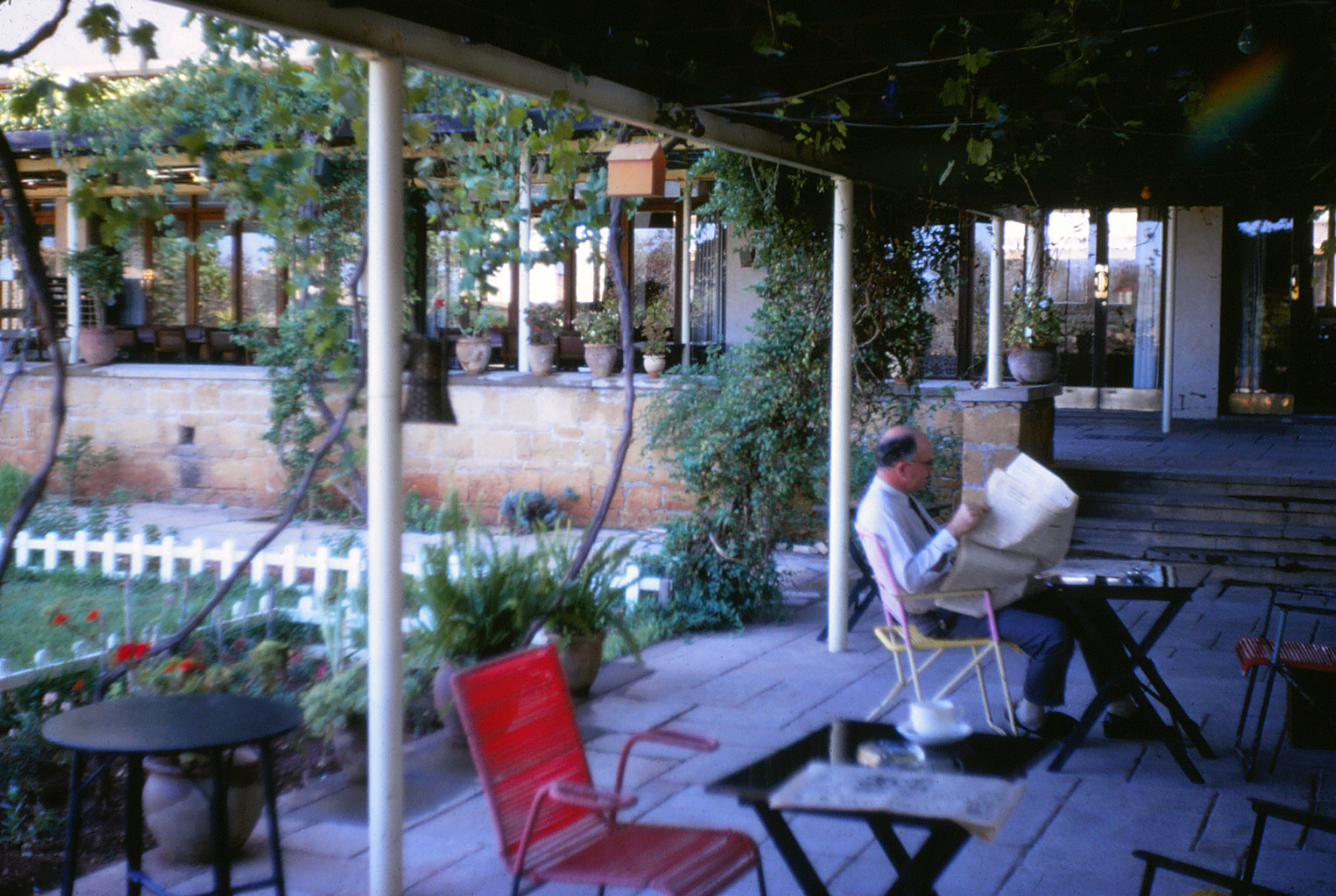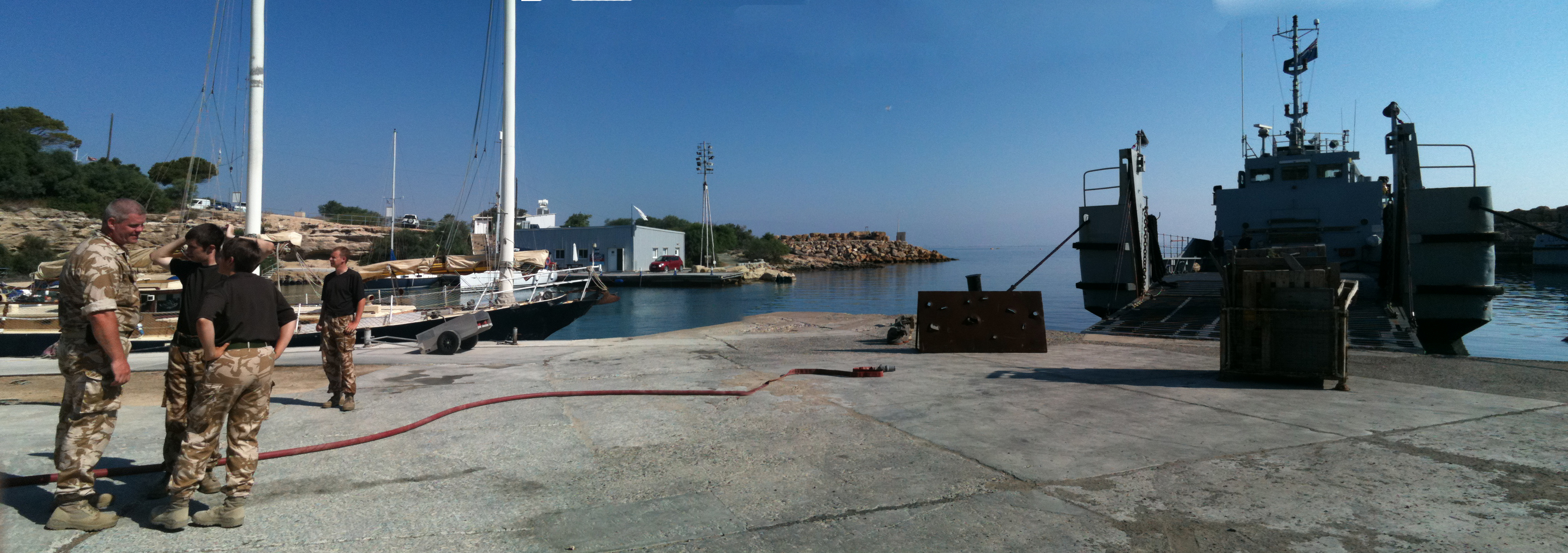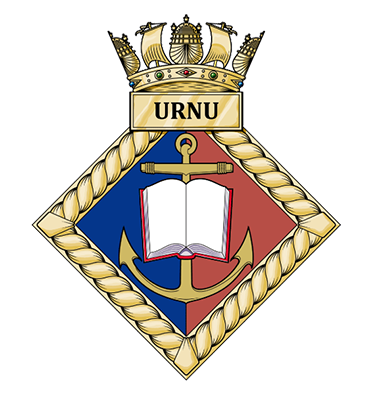|
HMS Dasher (P280)
HMS ''Dasher'' is an P2000 patrol and training vessel of the British Royal Navy. ''Dasher'' was built at Vosper Thorneycroft and commissioned in 1988. Operational history Prior to 2004, ''Dasher'' was based at Devonport as the training vessel for University Royal Naval Unit Bristol (URNUB). ''Dasher'' and were sent to Cyprus ahead of Operation Telic, the US-led invasion of Iraq in 2003, transported on board the CEC Mayflower. The Royal Navy Cyprus Squadron was created in February 2003, to protect ships around the Sovereign Base Areas in Cyprus, a vital staging post in the British logistic chain to Iraq. Both were fitted with Kevlar armour and three FN MAG general purpose machine guns, with an extra crew member (compared to the P2000s assigned to URNU duties) employed as a gunners yeoman. The Cyprus Squadron was disbanded in 2010 and ''Dasher'' was assigned to the Faslane Patrol Boat Squadron, protecting the ballistic missile submarines at HMNB Clyde. In September 2012, ... [...More Info...] [...Related Items...] OR: [Wikipedia] [Google] [Baidu] |
United Kingdom
The United Kingdom of Great Britain and Northern Ireland, commonly known as the United Kingdom (UK) or Britain, is a country in Europe, off the north-western coast of the continental mainland. It comprises England, Scotland, Wales and Northern Ireland. The United Kingdom includes the island of Great Britain, the north-eastern part of the island of Ireland, and many smaller islands within the British Isles. Northern Ireland shares a land border with the Republic of Ireland; otherwise, the United Kingdom is surrounded by the Atlantic Ocean, the North Sea, the English Channel, the Celtic Sea and the Irish Sea. The total area of the United Kingdom is , with an estimated 2020 population of more than 67 million people. The United Kingdom has evolved from a series of annexations, unions and separations of constituent countries over several hundred years. The Treaty of Union between the Kingdom of England (which included Wales, annexed in 1542) and the Kingdom of Scotland in 170 ... [...More Info...] [...Related Items...] OR: [Wikipedia] [Google] [Baidu] |
For But Not With
In military usage, fit to receive or fitting "for but not with" describes a weapon or system which is called for in a design but not installed or is only partially installed during construction, with the installation completed later as needed. This can be done to reduce the vessel's build cost by not purchasing the system at the time of construction, as a method of future-proofing a design, or for security purposes. The term is usually used in regard to ships but sometimes extends to military vehicles, aircraft and other hardware.Friedman, ''Seapower as strategy'', p. 236 Provision is made physically with power supply and data wiring to a hardpoint or through software for the installation of a weapon or system which is marked for purchase at a later date, with installation during the vehicle's modernisation or refit. Part of the justification for this design concept is the implicit assumption that in the event of the system being required (such as a war), there should be enough war ... [...More Info...] [...Related Items...] OR: [Wikipedia] [Google] [Baidu] |
HMNB Clyde
His Majesty's Naval Base, Clyde (HMNB Clyde; also HMS ''Neptune''), primarily sited at Faslane on the Gare Loch, is one of three operating bases in the United Kingdom for the Royal Navy (the others being HMNB Devonport and HMNB Portsmouth). It is the navy's headquarters in Scotland and is best known as the home of Britain's nuclear weapons, in the form of nuclear submarines armed with Trident missiles. History Faslane was first constructed and used as a base in the Second World War. During the 1960s, the British Government began negotiating the Polaris Sales Agreement with the United States regarding the purchase of a Polaris missile system to fire British-built nuclear weapons from five specially constructed submarines. In the end, only four were constructed; , , and . These four submarines were permanently based at Faslane. Faslane itself was chosen to host these vessels at the height of the Cold War because of its geographic position, which forms a bastion on the relative ... [...More Info...] [...Related Items...] OR: [Wikipedia] [Google] [Baidu] |
Kevlar
Kevlar (para-aramid) is a strong, heat-resistant synthetic fiber, related to other aramids such as Nomex and Technora. Developed by Stephanie Kwolek at DuPont in 1965, the high-strength material was first used commercially in the early 1970s as a replacement for steel in racing tires. It is typically spun into ropes or fabric sheets that can be used as such, or as an ingredient in composite material components. Kevlar has many applications, ranging from bicycle tires and racing sails to bulletproof vests, all due to its high tensile strength-to-weight ratio; by this measure it is five times stronger than steel. It is also used to make modern marching drumheads that withstand high impact; and for mooring lines and other underwater applications. A similar fiber called Twaron with the same chemical structure was developed by Akzo in the 1970s; commercial production started in 1986, and Twaron is now manufactured by Teijin. History Poly-paraphenylene terephthalamide (K2 ... [...More Info...] [...Related Items...] OR: [Wikipedia] [Google] [Baidu] |
Sovereign Base Areas
Akrotiri and Dhekelia, officially the Sovereign Base Areas of Akrotiri and Dhekelia (SBA),, ''Periochés Kyríarchon Váseon Akrotiríou ke Dekélias''; tr, Ağrotur ve Dikelya İngiliz Egemen Üs Bölgeleri is a British Overseas Territory on the island of Cyprus. The areas, which include British military bases and installations, as well as other land, were retained by the British under the 1960 treaty of independence, signed by the United Kingdom, Greece, Turkey and representatives from the Greek and Turkish Cypriot communities, which granted independence to the (then) Crown colony of Cyprus. The territory serves an important role as a station for signals intelligence and provides a vital strategic part of the United Kingdom surveillance-gathering network in the Mediterranean and the Middle East. History The Sovereign Base Areas were created in 1960 by the London and Zürich Agreements, when Cyprus achieved independence from the British Empire, as recorded by the Unite ... [...More Info...] [...Related Items...] OR: [Wikipedia] [Google] [Baidu] |
Royal Navy Cyprus Squadron
The Royal Navy Cyprus Squadron (RNCS) was a Royal Naval Squadron based on the Mediterranean island of Cyprus from February 2003 until April 2010. History It was formed in February 2003 in support of Operation Telic, the British invasion of Iraq, and disbanded in April 2010. The squadron comprised two P2000-class patrol ships, and ; these ships were reassigned to the Clyde Naval Base at Faslane in 2010. The ships were based at Akrotiri Mole near RAF Akrotiri and were employed in the protection of visiting ships and other British Forces Cyprus equipment designated as high value. The Squadron was also employed in Internal Security patrols of the Sovereign Base Areas (SBA), and training for visiting Royal Navy ships. They had a secondary role supporting the police and customs and excise of the Sovereign Base Area. Commanding officer The last commanding officer (December 2009) was Lieutenant Commander Charlie Barrow. He assumed command of the Cyprus Squadron in July 2009. RN Shi ... [...More Info...] [...Related Items...] OR: [Wikipedia] [Google] [Baidu] |
Operation Telic
Operation Telic (Op TELIC) was the codename under which all of the United Kingdom's military operations in Iraq were conducted between the start of the invasion of Iraq on 19 March 2003 and the withdrawal of the last remaining British forces on 22 May 2011. The bulk of the mission ended on 30 April 2009 but around 150 troops, mainly from the Royal Navy, remained in Iraq until 22 May 2011 as part of the Iraqi Training and Advisory Mission. 46,000 troops were deployed at the onset of the invasion and the total cost of war stood at £9.24 billion in 2010. Background Operation Telic was one of the largest deployments of British forces since World War II. It was only approached in size by the 1991 Operation Granby deployment for the Gulf War and the 1956 Operation Musketeer Suez Crisis deployment. It was considerably larger than the 1982 Operation Corporate in the Falklands War, which saw around 30,000 personnel deployed and the Korean War, which saw fewer than 20,000 personnel deplo ... [...More Info...] [...Related Items...] OR: [Wikipedia] [Google] [Baidu] |
University Royal Naval Unit
The University Royal Naval Units (URNU) ( , less commonly ) (formerly Universities' Royal Naval Units) are Royal Navy training establishments who recruit Officer Cadets from a university or a number of universities, usually concentrated in one geographical area. There are 17 URNUs in the UK, with each URNU having land-based facilities near the universities they recruit from, with the exception of URNU Virtual, whose drill nights are conducted virtually. Each unit has an affiliated P2000 ship, which is used for training Officer Cadets when not on duty with the Coastal Forces Squadron. Units URNU ships are part of the Coastal Forces Squadron, or "CFS". CFS is commanded by Commander CFS, who previously was also Commander URNU, Commander Universities now being a separate post. The mission statement of CFS is to provide high-quality sea training experiences in support of the URNU mission and to deliver P2000 operational capability in support of other fleet tasking. Histo ... [...More Info...] [...Related Items...] OR: [Wikipedia] [Google] [Baidu] |
Patrol Boat
A patrol boat (also referred to as a patrol craft, patrol ship, or patrol vessel) is a relatively small naval vessel generally designed for coastal defence, border security, or law enforcement. There are many designs for patrol boats, and they generally range in size. They may be operated by a nation's navy, coast guard, police, or customs, and may be intended for marine (" blue water"), estuarine ("green water"), or river (" brown water") environments. Per their name, patrol boats are primarily used to patrol a country's exclusive economic zone (EEZ), but they may also be used in other roles, such as anti-smuggling, anti-piracy, fishery patrols, immigration law enforcement, or search and rescue. Depending on the size, organization, and capabilities of a nation's armed forces, the importance of patrol boats may range from minor support vessels that are part of a coast guard, to flagships that make up a majority of a navy's fleet. Their small size and relatively low cost make ... [...More Info...] [...Related Items...] OR: [Wikipedia] [Google] [Baidu] |
FN MAG
The FN MAG is a Belgian 7.62 mm general-purpose machine gun, designed in the early 1950s at Fabrique Nationale (FN) by Ernest Vervier. It has been used by more than 80 countries and it has been made under licence in several countries, including Argentina, Canada (as the C6 GPMG), Egypt, India and the United Kingdom.Hogg, Ian (2002). ''Jane's Guns Recognition Guide''. Jane's Information Group. . The weapon's name is an abbreviation for ''Mitrailleuse d'Appui Général'', meaning "general support machine gun". The MAG is available in three primary versions: the standard, infantry Model 60-20 machine gun, the Model 60-40 coaxial machine gun for armoured fighting vehicles and the Model 60-30 aircraft variant. History The FN MAG was designed by FN Herstal in the 1950s. Taking inspiration from the MG 42, the MAG was created firstly to help balance out inconsistent levels of firepower among pre-existing infantry arms, and secondarily in response to NATO standardisation of the ... [...More Info...] [...Related Items...] OR: [Wikipedia] [Google] [Baidu] |
Forecastle
The forecastle ( ; contracted as fo'c'sle or fo'c's'le) is the upper deck of a sailing ship forward of the foremast, or, historically, the forward part of a ship with the sailors' living quarters. Related to the latter meaning is the phrase " before the mast" which denotes anything related to ordinary sailors, as opposed to a ship's officers. History and design In medieval shipbuilding, a ship of war was usually equipped with a tall, multi-deck castle-like structure in the bow of the ship. It served as a platform for archers to shoot down on enemy ships, or as a defensive stronghold if the ship were boarded. A similar but usually much larger structure, called the aftcastle, was at the aft end of the ship, often stretching all the way from the main mast to the stern. Having such tall upper works on the ship was detrimental to sailing performance. As cannons were introduced and gunfire replaced boarding as the primary means of naval combat during the 16th century, the medieval ... [...More Info...] [...Related Items...] OR: [Wikipedia] [Google] [Baidu] |
Royal Navy
The Royal Navy (RN) is the United Kingdom's naval warfare force. Although warships were used by English and Scottish kings from the early medieval period, the first major maritime engagements were fought in the Hundred Years' War against France. The modern Royal Navy traces its origins to the early 16th century; the oldest of the UK's armed services, it is consequently known as the Senior Service. From the middle decades of the 17th century, and through the 18th century, the Royal Navy vied with the Dutch Navy and later with the French Navy for maritime supremacy. From the mid 18th century, it was the world's most powerful navy until the Second World War. The Royal Navy played a key part in establishing and defending the British Empire, and four Imperial fortress colonies and a string of imperial bases and coaling stations secured the Royal Navy's ability to assert naval superiority globally. Owing to this historical prominence, it is common, even among non-Britons, to ref ... [...More Info...] [...Related Items...] OR: [Wikipedia] [Google] [Baidu] |







